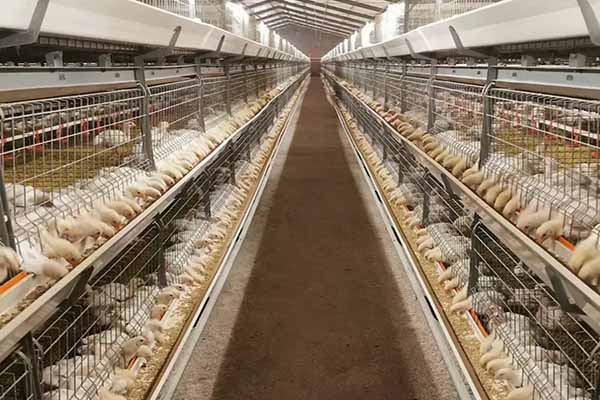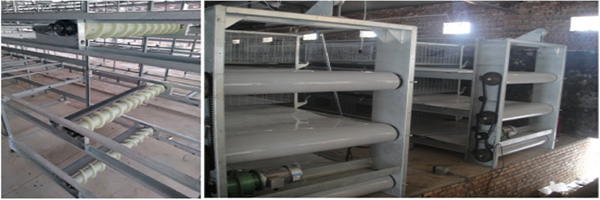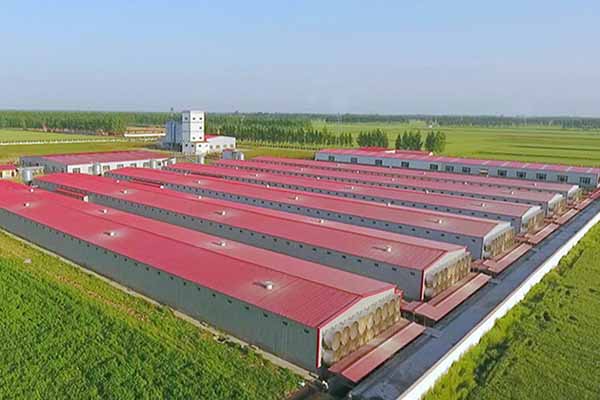Building a Poultry Farm in Zambia for 20,000 Chickens: A Comprehensive Guide
Time : 2025-06-27
Starting a poultry farm in Zambia with the capacity to house 20,000 chickens is a significant venture that requires careful planning, knowledge, and investment. This guide will walk you through the essential steps and considerations for building a successful poultry farm in Zambia.
Understanding the Poultry Industry in Zambia
Zambia has a growing poultry industry, driven by increasing demand for eggs and poultry meat. Before diving into the construction of your farm, it’s crucial to understand the local market and regulations.
Market Research
Conduct thorough market research to understand the current demand for poultry products in Zambia. Identify your target market, whether it’s retailers, wholesalers, or direct consumers.
Regulatory Compliance
Ensure that your poultry farm complies with all local regulations and standards set by the Zambia Veterinary Services Department. This includes obtaining the necessary permits and licenses.
Site Selection and Design
The success of your poultry farm depends heavily on the right site selection and farm design.
Site Selection
Select a site that is accessible, well-drained, and far from potential contamination sources such as agricultural fields and waste disposal sites. The land should also be conducive to building a permanent structure and have a reliable water supply.
Farm Design
The layout of your farm should be designed to maximize efficiency and minimize stress on the chickens. Consider the following elements:
- Brooding Area: Allocate space for brooding chicks for the first few weeks of their life. This area should be warm, well-ventilated, and protected from predators.
- Rearing Pens: Design pens that allow for easy movement of chickens, regular cleaning, and monitoring. Ensure adequate space per bird to prevent overcrowding.
- Feed Storage: Store feed in a dry, rodent-proof area to prevent spoilage and contamination.
- Water Supply: Ensure a reliable water supply with easy access to all areas of the farm.
- Manure Management: Plan for an efficient manure management system to maintain hygiene and prevent disease spread.
Equipment and Infrastructure
Investing in the right equipment and infrastructure is key to the success of your poultry farm.

Brooding Equipment
Brooding equipment includes heaters, brooders, and lighting systems to maintain optimal conditions for chicks during their first few weeks. Ensure that the equipment is energy-efficient and reliable.
Feeding Systems
Automated feeding systems can improve efficiency and ensure that chickens receive a consistent diet. Consider the type of feeders that best suit your farm’s layout and the size of your flock.
Watering Systems
Install automated watering systems that provide clean, fresh water to all chickens at all times. Nipple drinkers are a popular choice for large flocks.
Ventilation and Environmental Control
Proper ventilation is essential for maintaining a healthy environment in your poultry house. Invest in systems that control temperature, humidity, and air exchange rates.
Biosecurity Measures
Biosecurity is critical in poultry farming to prevent disease outbreaks.
Sanitation
Implement a strict sanitation protocol to  prevent the spread of diseases. This includes regular cleaning and disinfection of the poultry house, feed bins, and equipment.
prevent the spread of diseases. This includes regular cleaning and disinfection of the poultry house, feed bins, and equipment.
Predator Control
Install fences and netting to protect your flock from predators. Ensure that the perimeter of your farm is secure.
Health Monitoring
Regularly monitor the health of your chickens and be prepared to implement a disease control plan if necessary. Work closely with a veterinarian to develop a preventive health program.
Operational Management
Effective management is essential for the long-term success of your poultry farm.
Employee Training< /h3>
/h3>
Train your staff on best practices for poultry farming, including biosecurity, feed management, and health monitoring.
Record Keeping
Keep detailed records of all aspects of your farm’s operations, including feed consumption, egg production, and disease incidents. This data will help you make informed decisions and identify areas for improvement.
Conclusion
Building a poultry farm in Zambia for 20,000 chickens is a complex but rewarding endeavor. By carefully planning your site, selecting the right equipment, implementing biosecurity measures, and maintaining effective operational management, you can create a successful and sustainable poultry farm.











